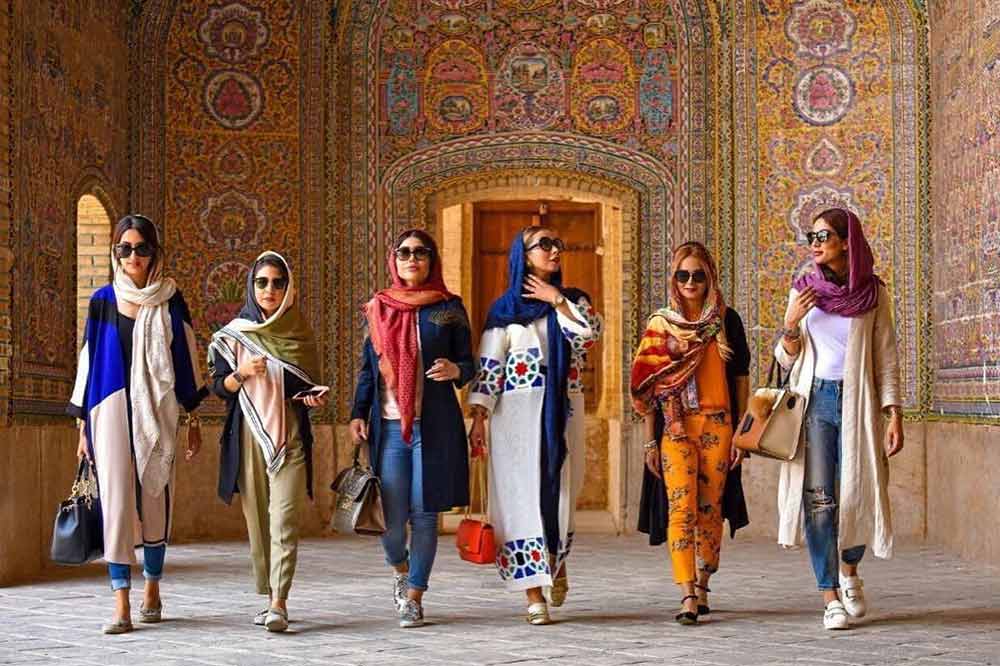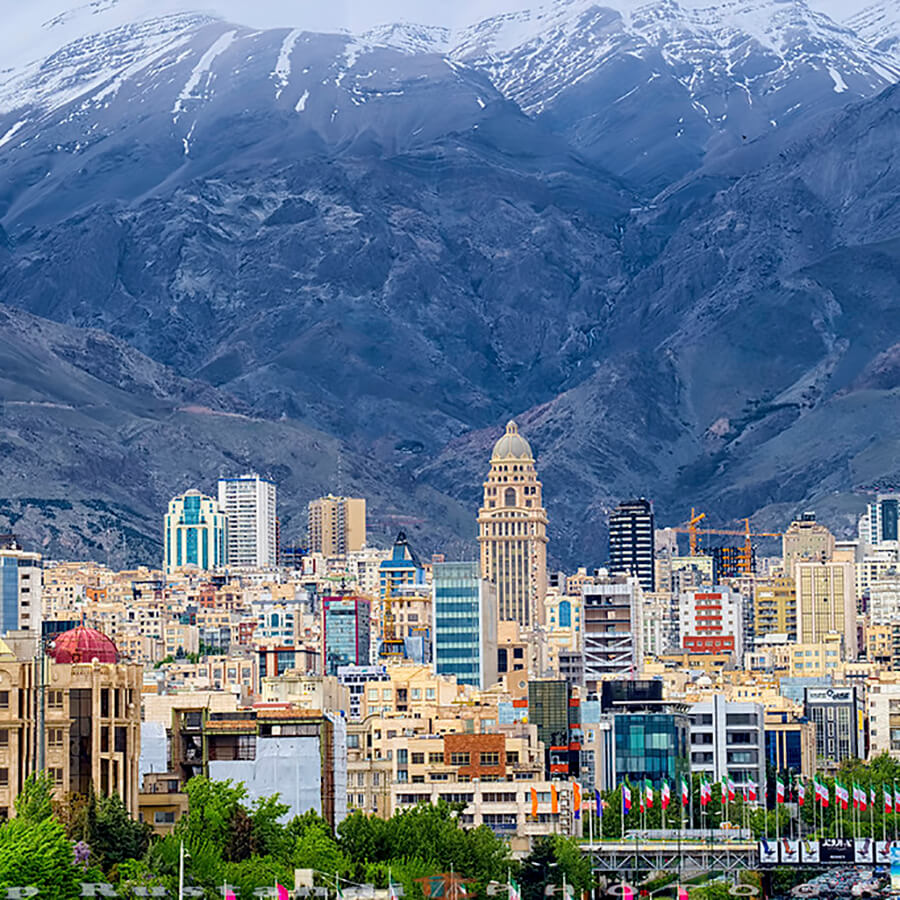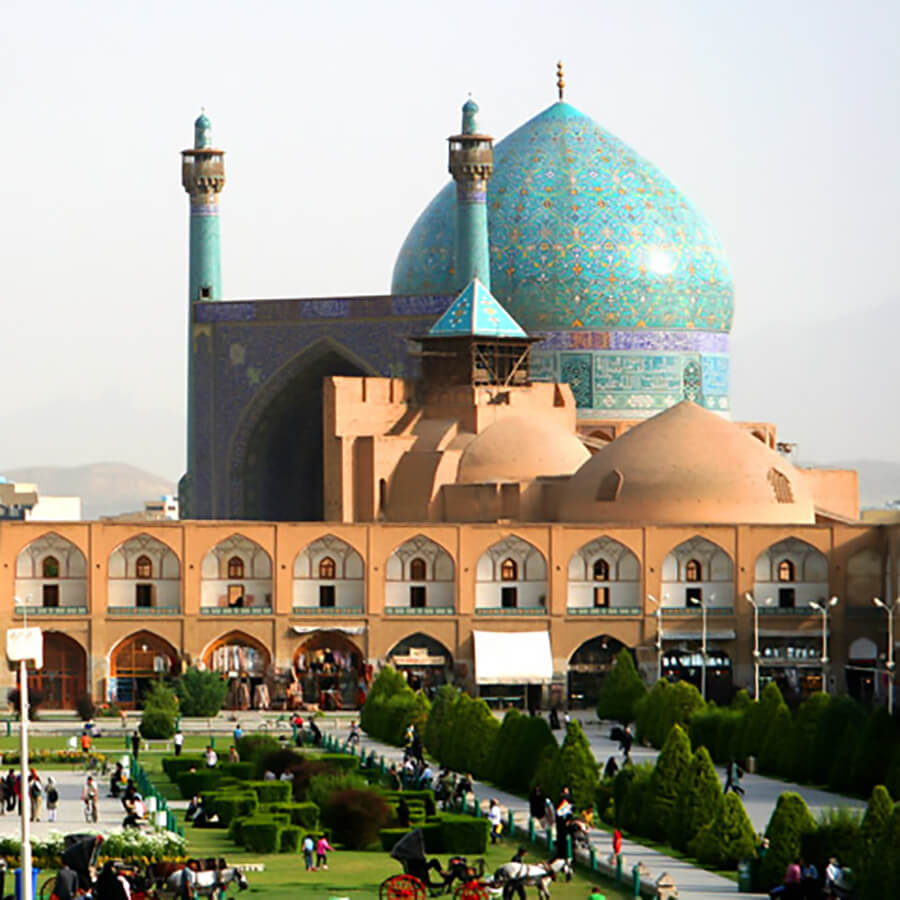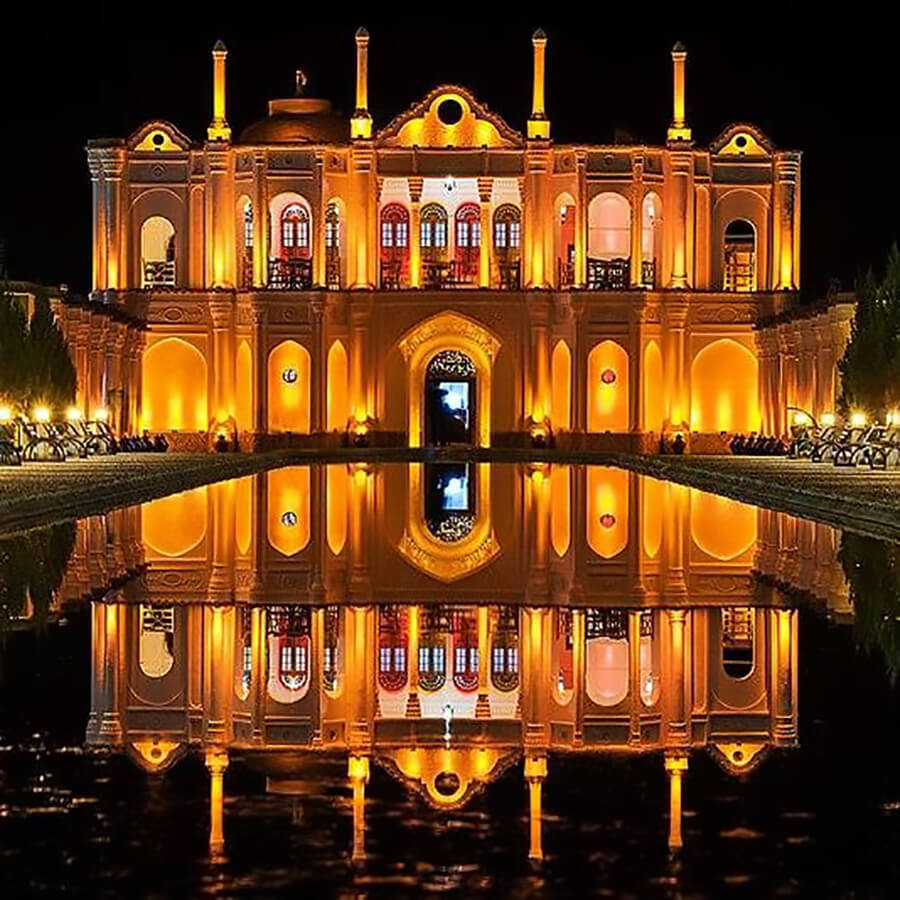We receive numerous messages through our Instagram account @leave.abode asking if it is mandatory for women to wear hijab in Iran.
Before your trip to Iran, you will surely get involved with what to pack for Iran. These may be your questions too: Can I wear skirts/shorts? How long? Am I allowed to wear jeans?
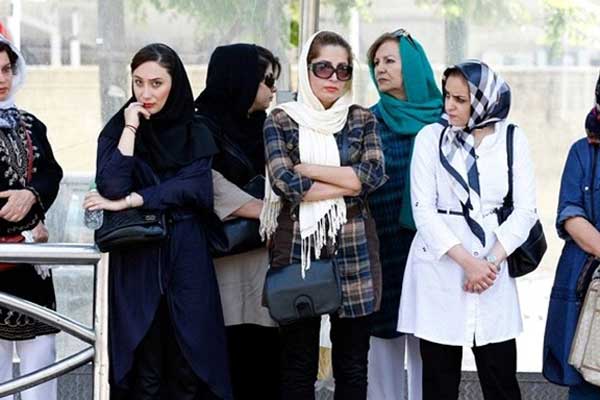 So, this article about the dress code in Iran would be a good idea to help you pack the right clothes before leaving.
So, this article about the dress code in Iran would be a good idea to help you pack the right clothes before leaving.
Based on the Islamic rules governing the country, Iran is among the rare countries with a dress code that must be followed and the only country that imposes this on tourists as well. But do you know that these rules are not as strict as you think?
Even if it seems complicated, it is ultimately quite simple to understand how one should dress in Iran. In recent years, you will find it fascinating to watch so many stylish women everywhere despite all these hijab rules they have to follow.
All in all, hijab may seem like a bit of an obstacle, but once there you realize that Iran has so many incredible monuments to see you end up giving it little importance.
What is the dress code for men on a trip to Iran?
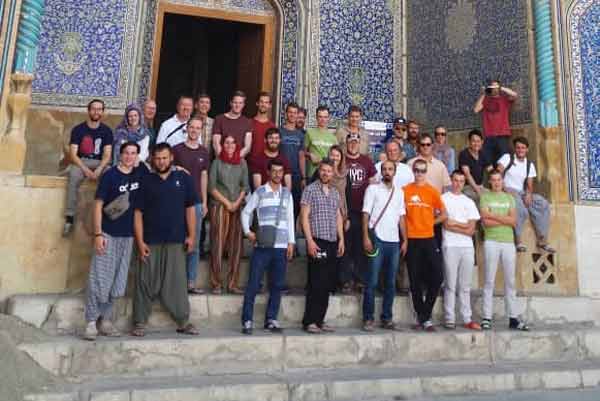 The dress code for men is not complicated and less restrictive. Depending on the temperature select to put on a t-shirt or shirt in any color on top.
The dress code for men is not complicated and less restrictive. Depending on the temperature select to put on a t-shirt or shirt in any color on top.
When the temperature is high like when it reaches 50ºC, it can be hard to endure in pants. But pants are the only option since it is forbidden to wear shorts in Iran. However, shorts are tolerated for the practice of sports or when you are in nature. It is also ok to wear shorts inside the hotels or patio if you have one. At the level of the feet, you can wear sandals and flip-flops without a problem.
What is the dress code for women in Iran?
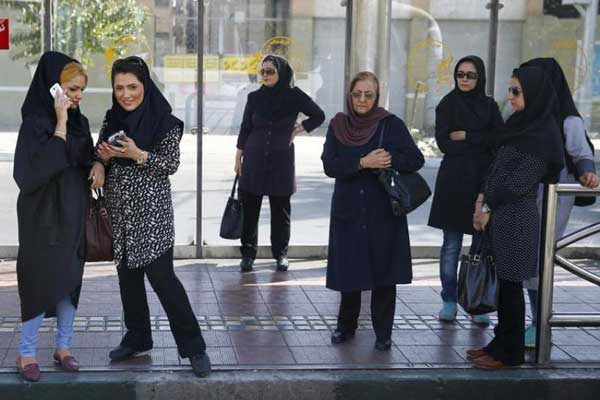 Even if there are codes to respect both sexes, this article is mainly aimed at women who want to travel to Iran since it is for them that the restrictions are the strictest.
Even if there are codes to respect both sexes, this article is mainly aimed at women who want to travel to Iran since it is for them that the restrictions are the strictest.
The general dress code rule is:
- Head must be (partially) covered with a scarf
- Arms and legs must be covered
- The buttocks must be covered by a garment extending at least to mid-thigh
- Tight-fitting clothes should be avoided
When you’re a woman, it gets a little more complicated. There are indeed different things to keep in mind when packing your suitcase to go to Iran.
The rule of thumb is that it is compulsory for a woman to cover their hair by wearing the headscarf (or as the tourists call it, hijab) in public places, even if you are a tourist. The headscarf can be any scarf or shawl that you have at home, it is not necessary to get very complicated.
How to wear a headscarf for a trip to Iran?
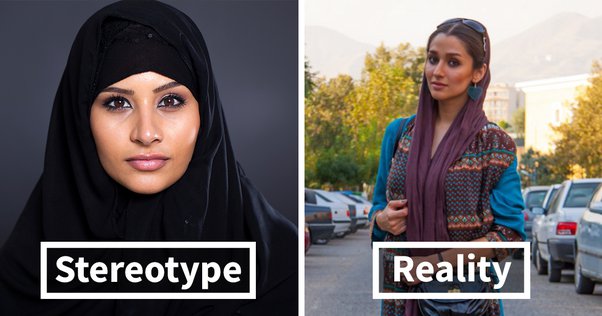 When we talk about hijab in Iran, don’t imagine yourself going out with something like the Arabic hijab. You will see it from your first hours in Iran, the Iranian women are very stylish, they try to make the headscarf a rather stylish accessory as well. The scarf is often laid casually on the hair letting a bunch of hair out from both front and back.
When we talk about hijab in Iran, don’t imagine yourself going out with something like the Arabic hijab. You will see it from your first hours in Iran, the Iranian women are very stylish, they try to make the headscarf a rather stylish accessory as well. The scarf is often laid casually on the hair letting a bunch of hair out from both front and back.
So, keep it simple, for you as a tourist it will be enough to put the scarf on your head and pass one of the sides over the opposite shoulder, or simply wrap it around your head with one end hanging down the front without any knots. You can wear it tied at the front or back if it’s windy.
Read some simple ways of wearing headscarf.
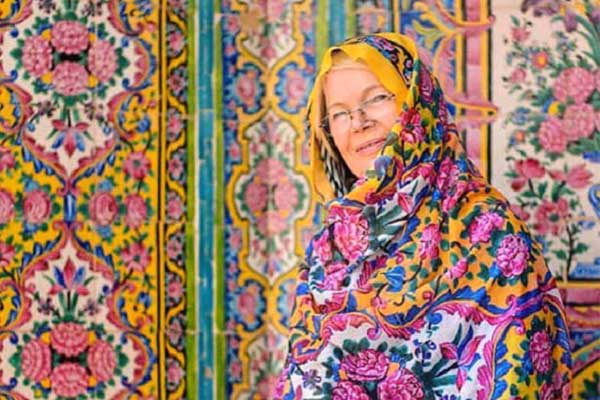 Little tips:
Little tips:
- Make a bun before putting on your headscarf because it prevents the scarf from falling too often.
- Avoid silk or other synthetic fabrics so that it does not fall off all the time; instead, use scarfs made of cotton or any other material that does not slip easily.
- Using a hairpin to hold your scarf to the hair can come in handy as well.
- It is absolutely acceptable to wear any color you prefer. there is no limitation on the color of the scarf or other clothes.
How to get styled the Iranian way?
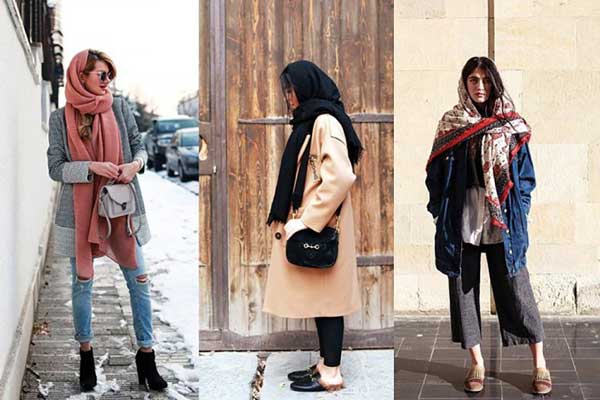 As said before, the hijab in Iran is not as strict as what you see in Arab countries. As an essential code of etiquette, it is important for Iranians to wear clean and neat clothes. So be ready to see many stylish people in Iran who transform the hijab into eye-catching styles.
As said before, the hijab in Iran is not as strict as what you see in Arab countries. As an essential code of etiquette, it is important for Iranians to wear clean and neat clothes. So be ready to see many stylish people in Iran who transform the hijab into eye-catching styles.
The Iranians of the younger generation, wear clothes with minimal expression, showing the arms from the elbows and placing the headscarf as far back as possible. They make a high ponytail or a collected one, just enough to stop to hold the headscarf.
When do you have to wear the headscarf (hijab) in Iran?
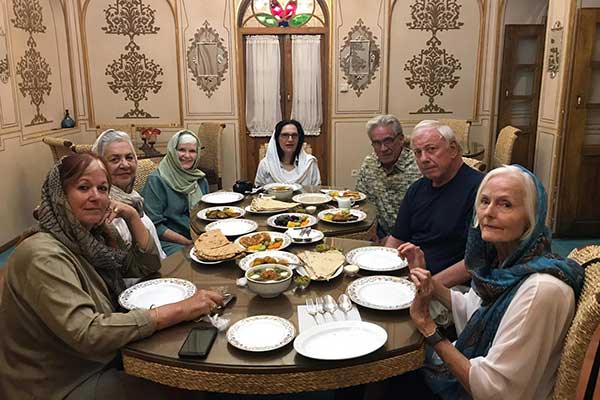 The headscarf must be worn from the first moment. So, don’t put it in your suitcase but put it in your handbag in the cabin because you will have to put it on as soon as you leave the plane.
The headscarf must be worn from the first moment. So, don’t put it in your suitcase but put it in your handbag in the cabin because you will have to put it on as soon as you leave the plane.
After the plane landing and before the doors open is the best time to put on the scarf. It is something that you are not used to and may have never done before so it may be a bit stressful but don’t panic, we have told you above how to wear it easily.
Important note: for the visa on arrival, it is essential to have travel insurance. Let’s help you with this service.
 You are not used to wearing a headscarf so it may get tangled up with the camera strap, with the backpack or falls off frequently. There is no major problem, don’t think anything bad is going to happen to you. People know that you are not skilled in this subject.
You are not used to wearing a headscarf so it may get tangled up with the camera strap, with the backpack or falls off frequently. There is no major problem, don’t think anything bad is going to happen to you. People know that you are not skilled in this subject.
If it happens that you leave the hotel forgetting your headscarves, no problem, you will realize it soon through the weird looks. If this happens to you, just turn around!
In the car or on the bus, normally you have to wear a headscarf. When you leave the cities there is more tolerance, in nature or outside, no need to wear a scarf but put on hats or hoods.
The rest of the dress code for women in Iran?
After the headscarf, let us talk about wearing other clothes adapted to the rules of the country. Basically, the female forms (buttocks, cleavage, shoulders, arms, or legs) should be covered.
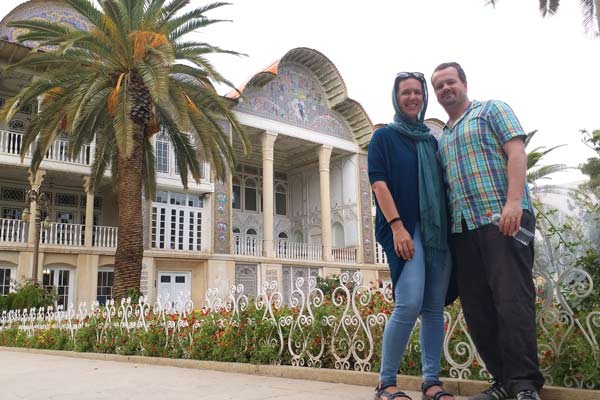 The best thing to wear is long vests, tunics or loose shirts that fall well under your buttocks over pants or long skirts. ¾ sleeves are accepted but try not to use anything above the elbow.
The best thing to wear is long vests, tunics or loose shirts that fall well under your buttocks over pants or long skirts. ¾ sleeves are accepted but try not to use anything above the elbow.
It’s okay to wear skinny jeans, leggings, or any other type as long as it covers your body; it is tolerated to show the ankles. At the level of the feet, you can wear sandals and flip-flops without a problem.
If you don’t have a perfect idea about what to wear yet, simply wear something loose and long over your normal outfit and on the spot do shopping from the nearby boutiques next to your hotel or in the city.
How is clothing in religious cities of Iran?
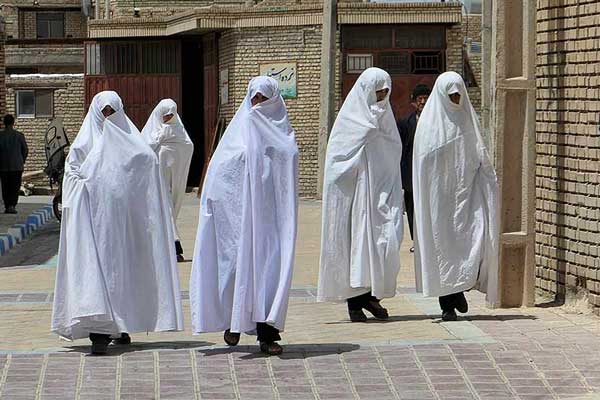
White chador used in the village of Varzaneh
In the religious cities and the smaller cities and villages, the most used type of Hijab is Chador. Chador is the black cloth that covers women from head to toe.
It is important to say that all the rules are changing recently by the new generation, so that will not be strange to see women put on modern types of clothing with make-up and nail jobs even in religious cities.
That is not strange if you see women who wear skinny jeans, a tunic, and a flowery scarf and when they get out of their car put on a chador over these clothes.
In shrines and religious places, women are supposed to have full body coverage by chador, otherwise, it would be interpreted as a lack of respect for the sacred. Chador is often provided on site for visitors and tourists.
Quick note: Iranians value rugs, so take off your shoes in sacred and carpeted or rug-covered places.
Makeup and Iranian women
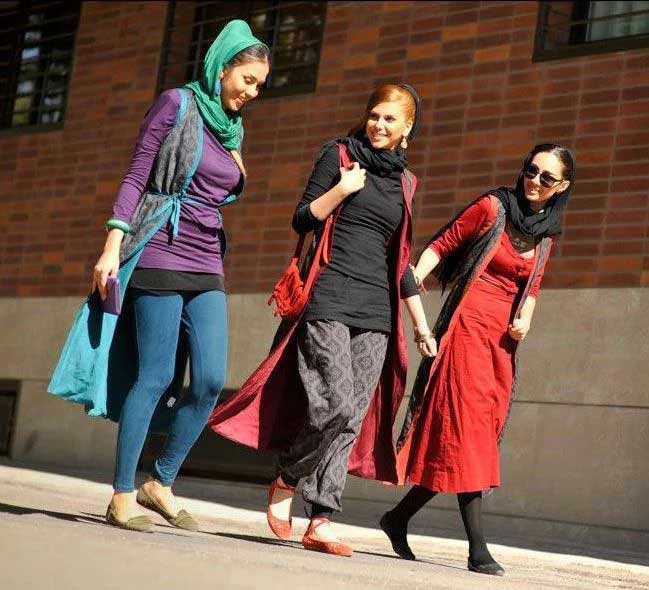 Makeup is one of the few things not forbidden for women! The face is the rare part of femininity that has the right to show to others, so Iranian women take advantage of it. It is also reformed over generations. In general, women of older age used to do a lot of makeup, however, the new generation seems to need it less than before.
Makeup is one of the few things not forbidden for women! The face is the rare part of femininity that has the right to show to others, so Iranian women take advantage of it. It is also reformed over generations. In general, women of older age used to do a lot of makeup, however, the new generation seems to need it less than before.
Iran is the country where the most rhinoplasties are performed in the world as an indicator of social status. The operation is so coveted that many women keep the bandages on for far longer than expected, just to show they’ve had it done.
Read more about doing a nose job in Iran.
Male/female contacts in Iran
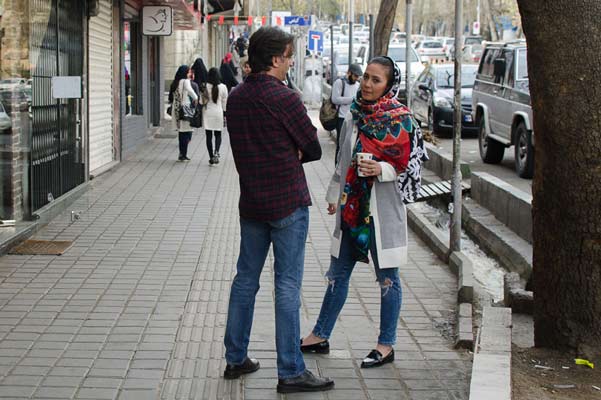 Women and men can appear together in public without a problem. Nevertheless, they refrain from physical contact, especially among the more conservative people. After all, there is a gap between the generations and with young Iranians, contacts are much more free and more common. While the young generation shakes hands with friends, the older generation places a hand on the heart to say hello to the other sex.
Women and men can appear together in public without a problem. Nevertheless, they refrain from physical contact, especially among the more conservative people. After all, there is a gap between the generations and with young Iranians, contacts are much more free and more common. While the young generation shakes hands with friends, the older generation places a hand on the heart to say hello to the other sex.
With the revolution, girls were separated from boys at school and were forced to respect Islamic dress at school. You will see school girls wearing long uniforms and scarves.
That is normal to see young couples holding hands; as tourists, holding hands is surely tolerated.
Hijab in Iran through history
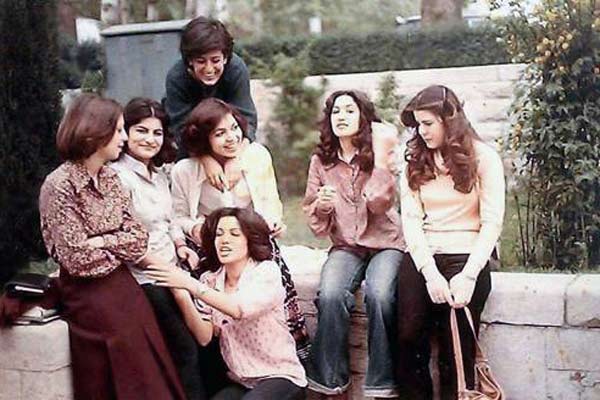 Mandatory hijab has not always existed but this law was implemented since the 1979 Revolution. Before that time women in Iran even wore miniskirts.
Mandatory hijab has not always existed but this law was implemented since the 1979 Revolution. Before that time women in Iran even wore miniskirts.
During the time of Reza Shah (in 1936) hijab was banned in his pursuit of modernism and considered a symbol of anti-modernism. In the reign of his son, Mohammad Reza Shah, the policy of modernism was continued but the ban on the hijab was lifted. Urban women from traditional backgrounds put on a chador (a more strict type of hijab). On the contrary, most women in modern circles of the middle and upper class adopted Western dress.
Since the Islamic revolution in 1979, the chador was considered a symbol of the struggle against the westernized culture to preserve the Islamic rules that caused the obligation of hijab in public. A chador is a black or flower-patterned garment that covers the entire body except for the face.
In more traditional and religious cities or in the villages, you may see women wearing chador yet.
Conclusion on how to dress in Iran
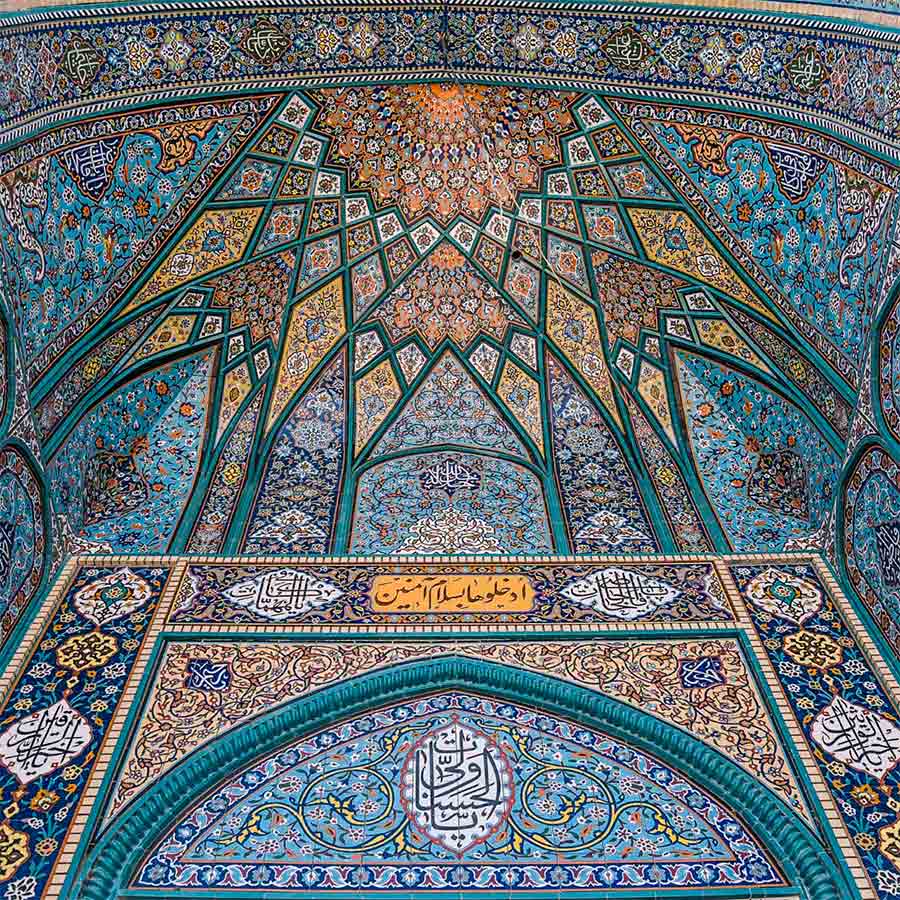 Surely, hijab or specifically a headscarf will be uncomfortable if you are not used to it. It gets tangled up in your camera and equipment, it frequently falls off your head and it is hot to have a tissue wrapped around you. Despite all, the hijab is not something to ignore in Iran as a destination. Ancient Persia, friendly people, historical hotels, delicious food, Persian baths and a thousand things to see are all waiting for you.
Surely, hijab or specifically a headscarf will be uncomfortable if you are not used to it. It gets tangled up in your camera and equipment, it frequently falls off your head and it is hot to have a tissue wrapped around you. Despite all, the hijab is not something to ignore in Iran as a destination. Ancient Persia, friendly people, historical hotels, delicious food, Persian baths and a thousand things to see are all waiting for you.
And, answering another frequently asked question, Iran is a very safe country! At the security level, it is comparable to any European country. Read more about Security and safety in Iran.


